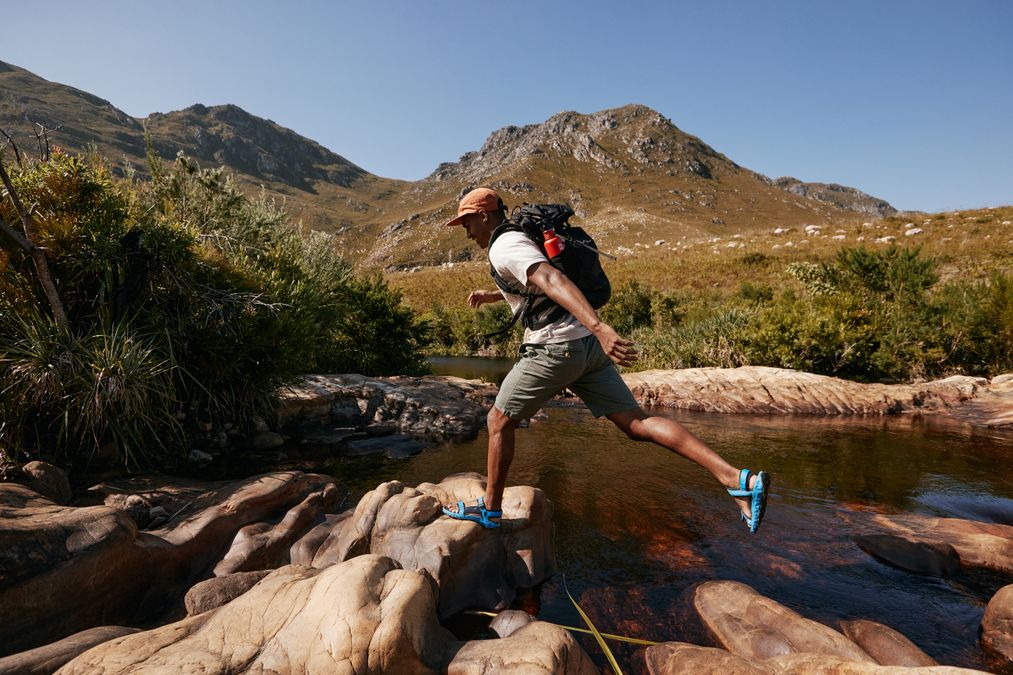10 tips for hiking in the heat
The mountains call when the sun is shining in summer. If temperatures rise above the 30 (86) degree mark, hiking and trekking tours can become particularly arduous. So you should be aware of the best tips for cooling down in the heat.
1. Make an early start
The most strenuous part of a mountain hike or a walk is the ascent. You should therefore set off early in the morning to get the most arduous section behind you whilst it's cooler. Temperatures usually peak around midday – by which time you should have covered most of the walk.
2. Plan your route carefully
When choosing your route, is important to try and plan the ascent in such a way that it is in the shade. The north face of the mountain is the best option here. The sun only shines here when it is higher in the sky. That leaves you plenty of time to sweat less during the first part of the ascent. Paths through the forest are also recommended. Not only do the trees provide protection from the sun's rays, they also cool the surrounding air by drawing moisture from the ground and releasing it. Hiking through the forest in summer is particularly pleasant as a result of this process of evaporative cooling. The same is true of a route alongside a cold mountain stream. The water cools down the surroundings. A shady gorge or ravine can also provide for more pleasant temperatures in the same way as forests and water.
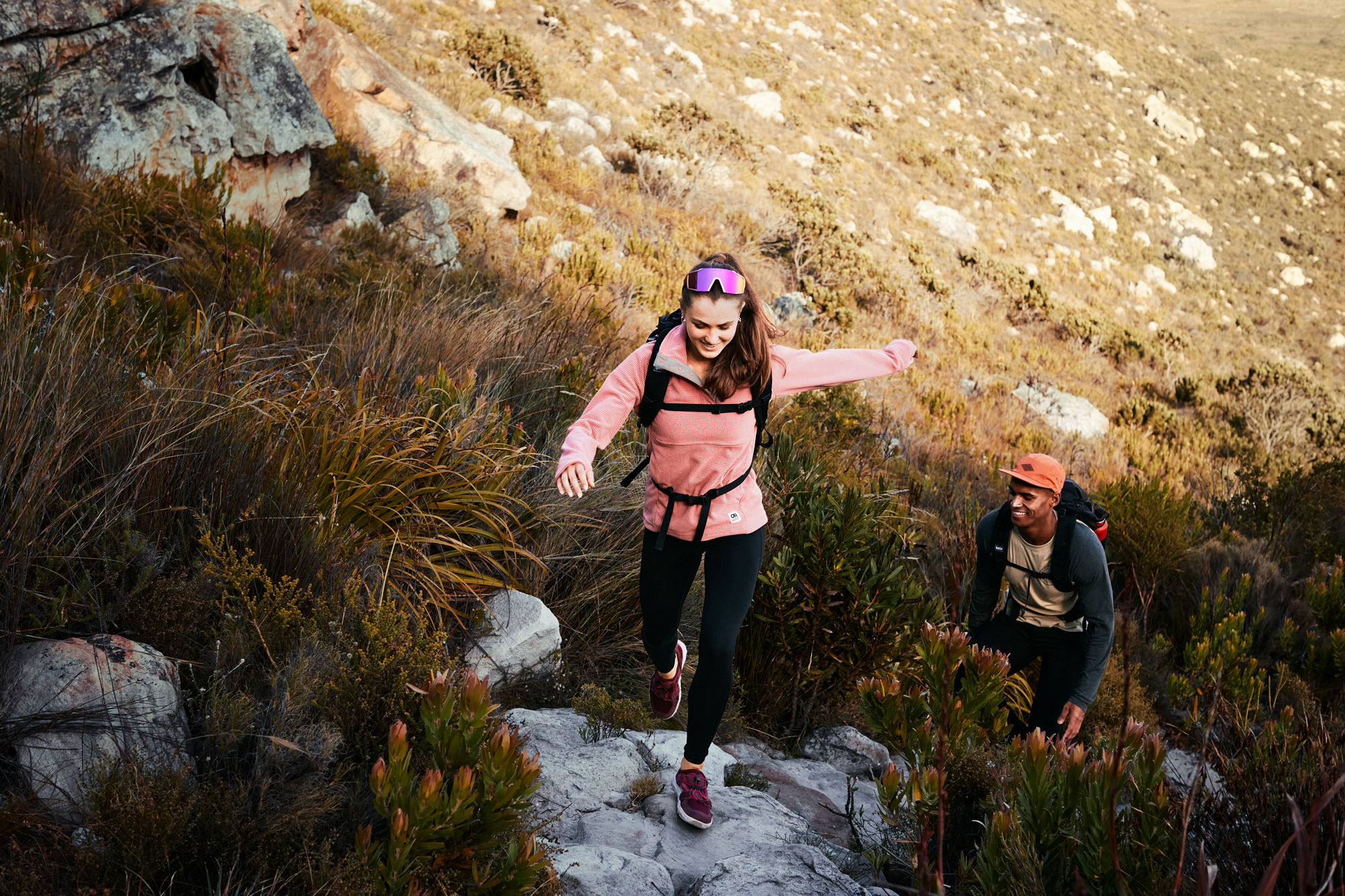
3. Make the goal worthwhile
The typical goal of a hike is to reach the summit. Needless to say, the peak of a mountain is also a highlight in summer. Nevertheless, there are other worthwhile goals on a hiking tour in the heat – a clear mountain lake, for example. There is nothing more refreshing than a splash of cold water after an arduous climb. Be careful not to jump in the lake. Enter the water slowly, as it could be very cold. If your overheated body cools down too suddenly, there is a risk that the functions of your cardiovascular system may be impaired – and there is a danger to life in such cases.
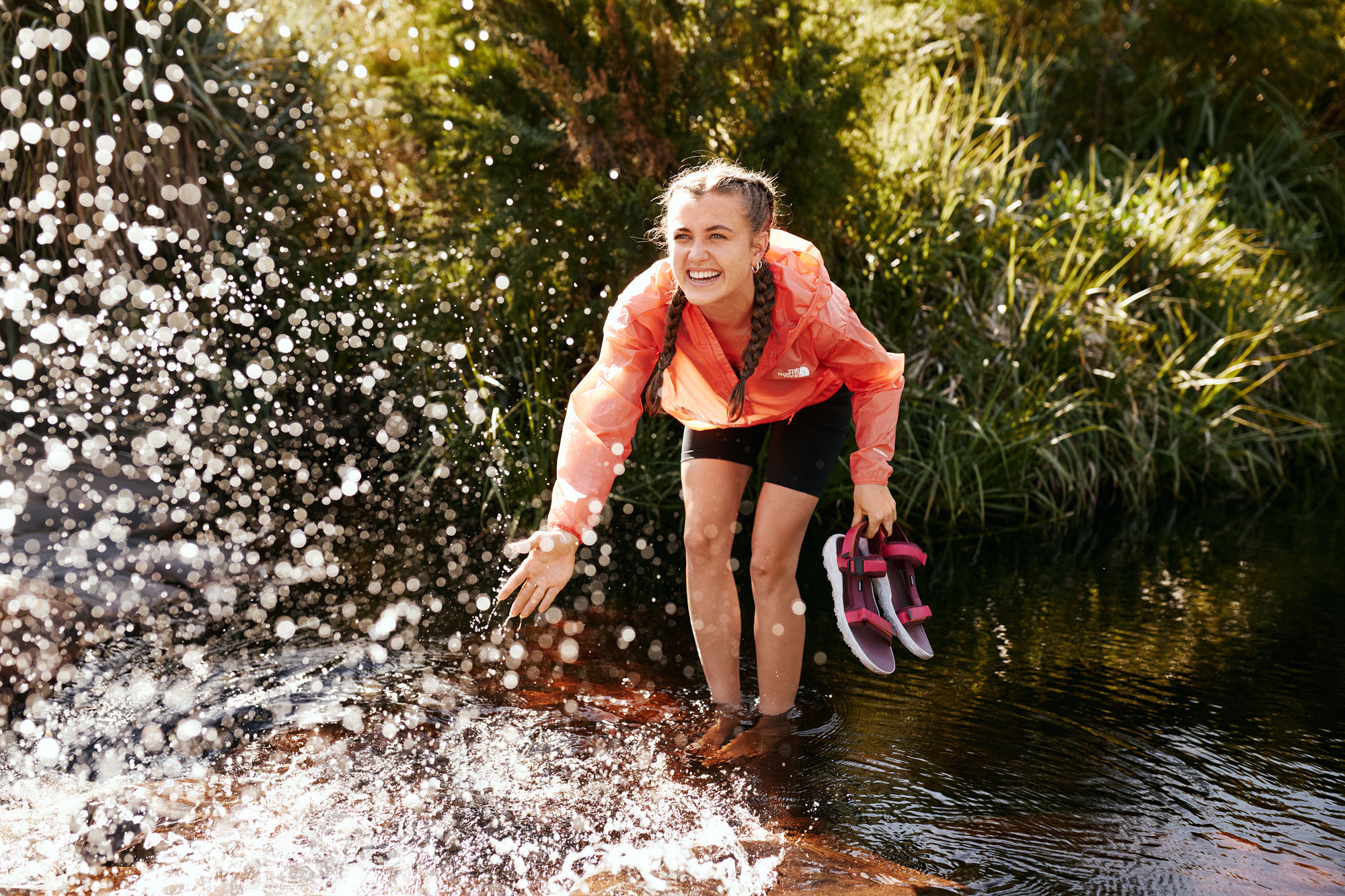
4. Wear functional clothing
As soon as we become too warm or hot, our body tries to regulate its own temperature rise: our pulse increases, blood is pumped to the surface, our breathing becomes more frequent, and we start to sweat. What sounds strenuous is indeed so. That’s why you should help your body to compensate for temperature fluctuations. One aspect of this is functional clothing made of synthetic materials or merino wool. It conducts moisture away from the skin and is therefore very comfortable to wear.
Be aware also that UV radiation increases at higher altitudes. It is advisable to wear longer clothing here. At the very least, you should think about a change of shirt for breaks en route or at the summit.
5. Choose the right shoes
Hiking shoes must fit your feet and be fit for purpose. You will sweat more in the heat in stiff leather hiking boots than in models made of fabric. Make sure that the sole of your shoe is breathable. To guarantee the best ventilation in high summer, go for special hiking sandals with a sturdy footbed and a fastening system that offers sufficient hold even over long distances. This will allow you to cool your feet in a stream whenever you want without having to worry about painful blisters.
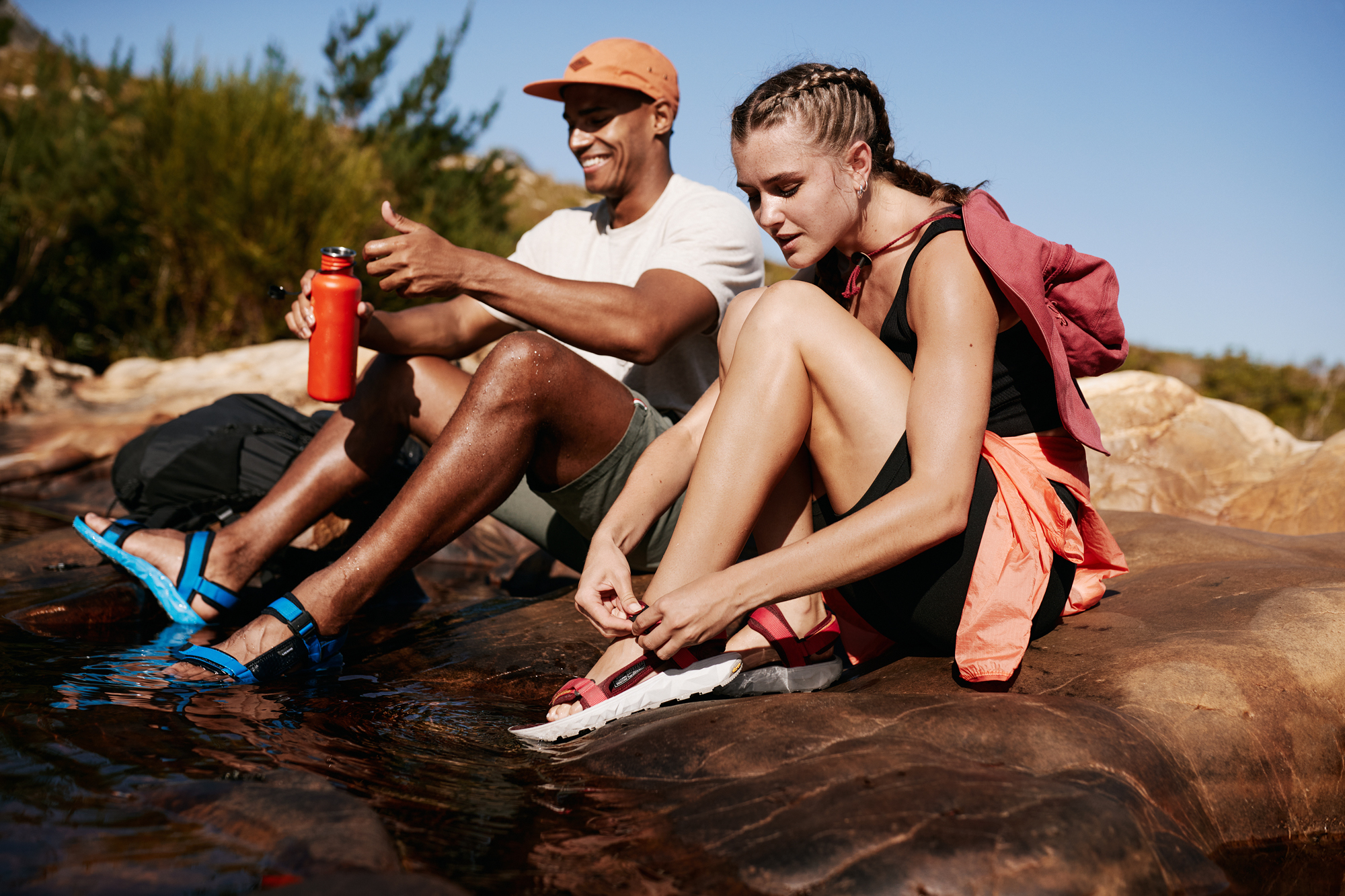
6. Take the right refreshments – food & drink
The cardinal rule in the heat is drink, drink, drink. Your body should always be hydrated throughout the hike. Note that if you feel thirsty, it is already too late. This means firstly that you should always bring plenty to drink and, secondly, that you should keep consuming small amounts. This is the best way to help your body absorb and process it. Water, isotonic drinks and drink powders are the best way to compensate for loss of fluid and provide mineral nutrients.
With the right refreshments, you can give your body the energy it needs in order to regulate your temperature. Easily digestible foods that you can tolerate are the best option when you need to eat. Bananas and high-quality energy bars with long-chain carbohydrates are recommended, for example.
7. Check the weather carefully
Heat in the summer increases the risk of storms in the mountains at the same time. Gloriously sunny days can actually be deceptive. You should therefore check the weather report carefully before you go hiking and keep an eye on the situation throughout your tour. Keep yourself informed when you pass huts en route – the experience of local people can be worth its weight in gold.
When planning longer tours in particular, you should consider and internalize possible shortcuts beforehand.
8. Be realistic about your limits
The higher the temperatures, the slower you should keep your pace. Take good care of yourself so that you can enjoy the whole hike. Above all, if you are out with a group, you should listen carefully to your body. Overexertion is to be avoided at all costs – excessive ambition has no place here.
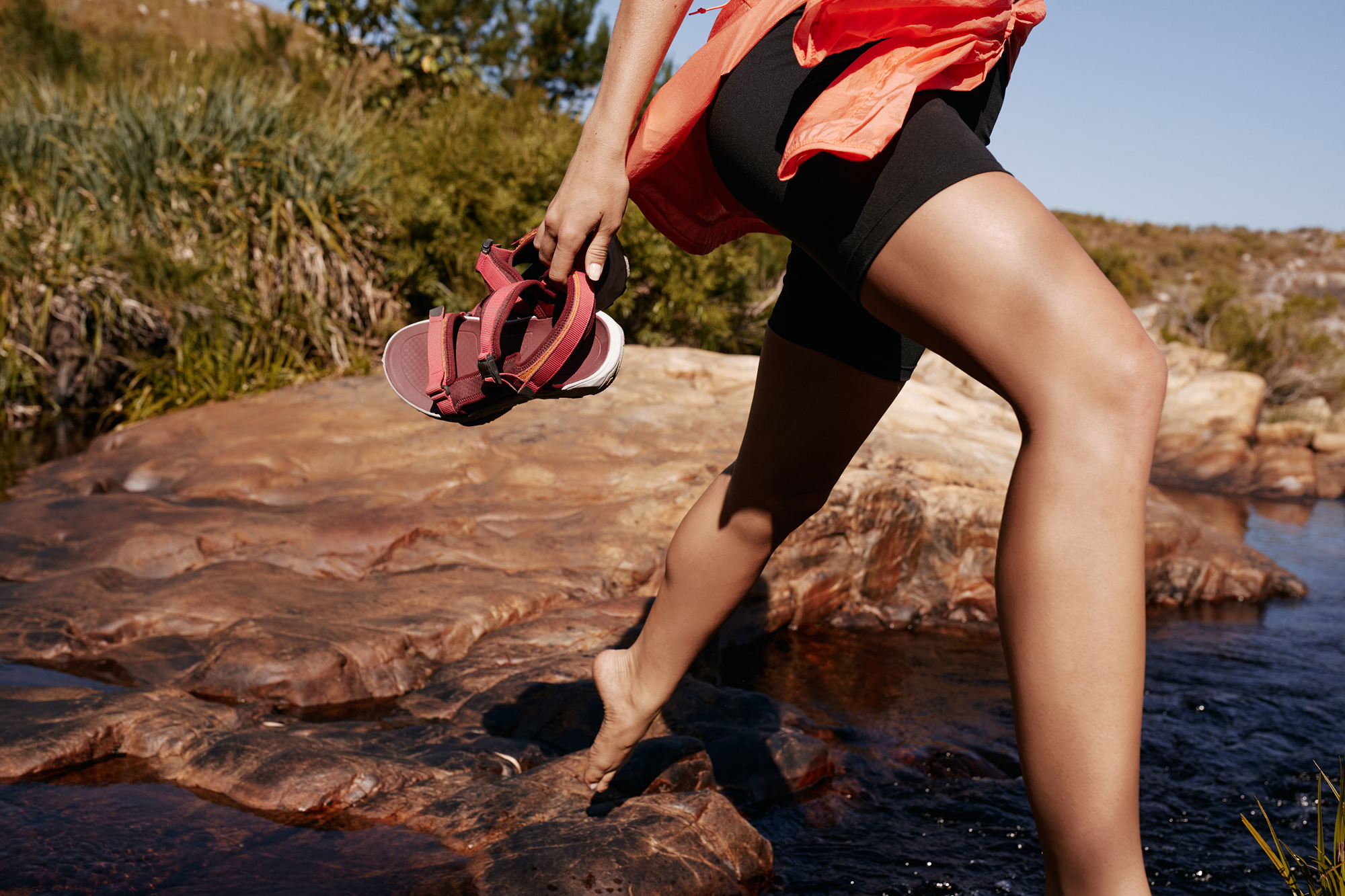
9. Take regular breaks
It sounds simple but is very effective: by taking regular breaks en route, you give your body precious time to recover for the next leg of your walk. Planned breaks can also be very important from a psychological perspective. You boost your mental and physical energy, and, in the best of cases, you stay fresh all day. It is important to stay in the shade during breaks in order to avoid the risk of sunstroke or heat stroke.
10. Use all-round sun protection
The higher you go, the cooler it becomes. Lower temperatures at higher altitudes can be deceptive, however. As soon as you reach the tree line on your walk there will be no more shade, so you should pay all the more attention to sun protection: the sun is even stronger at altitude. Use plenty of sun screen (high SPF) and cover your head with a sun hat, cap or bandana. You should also think about high-quality sunglasses.

